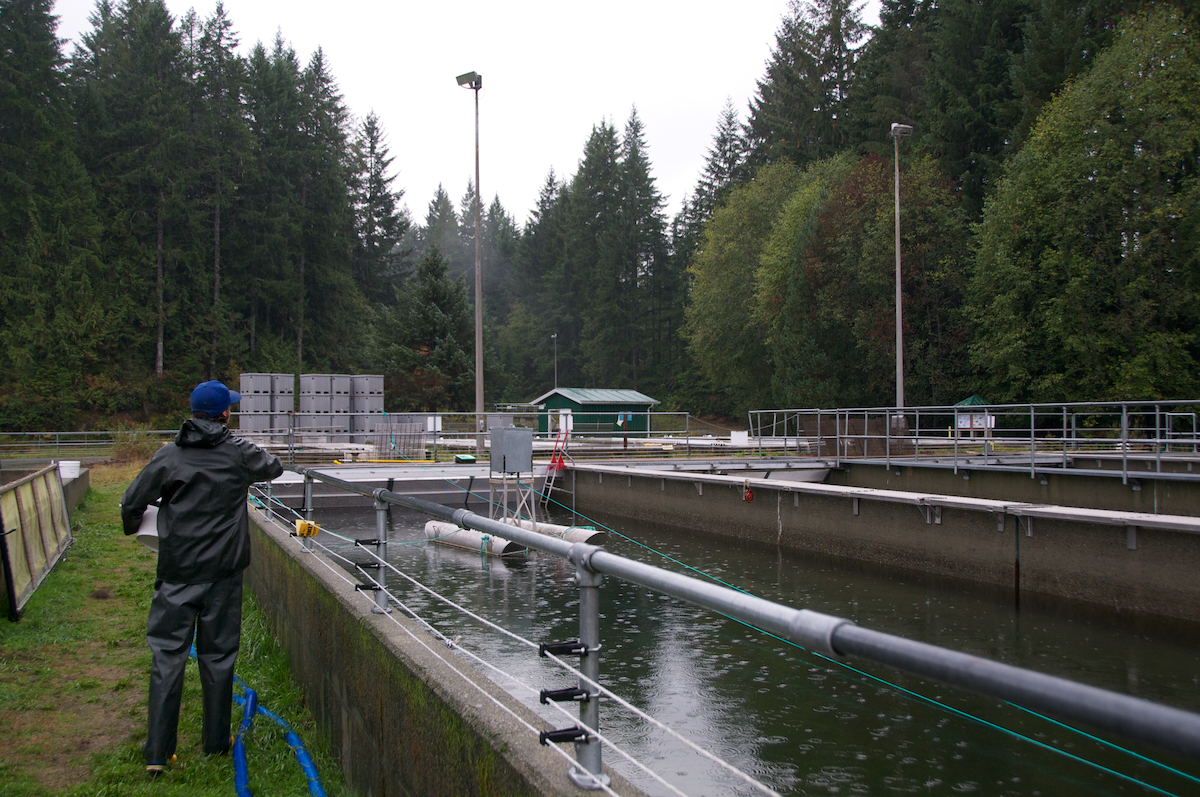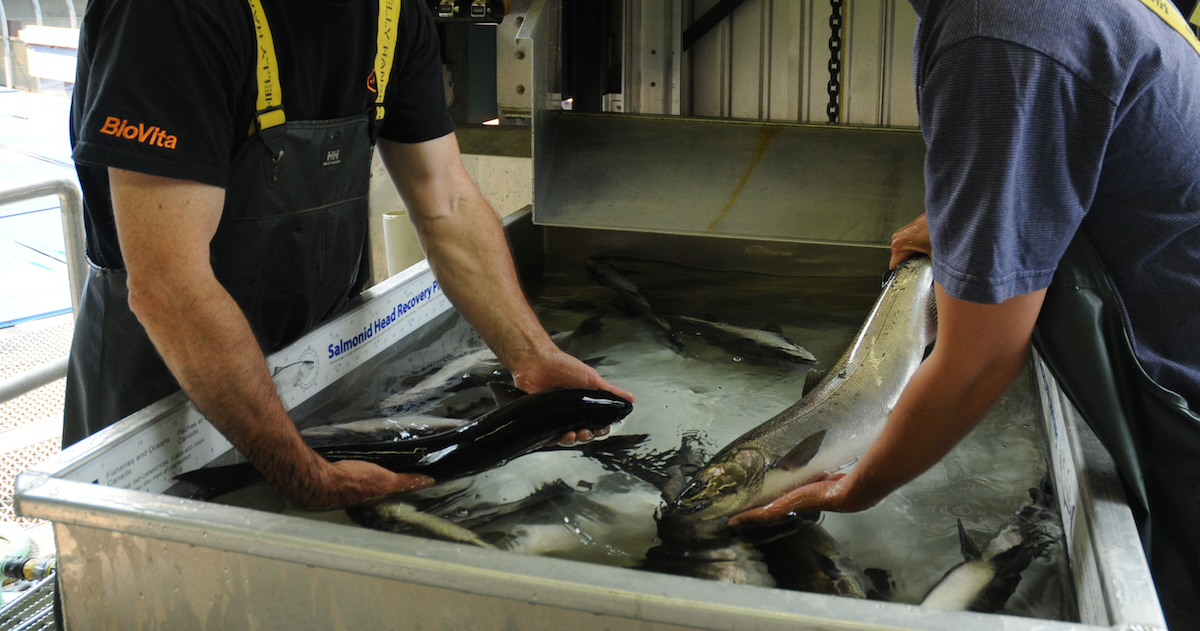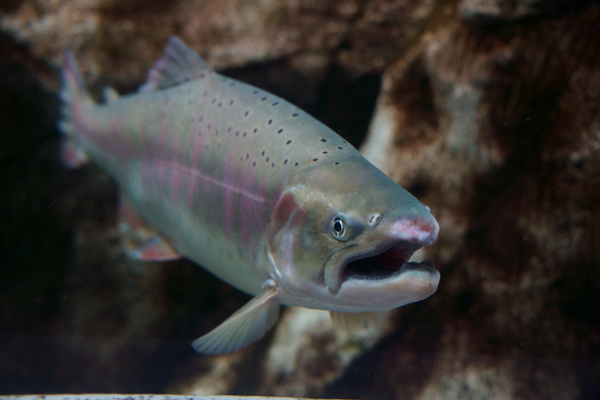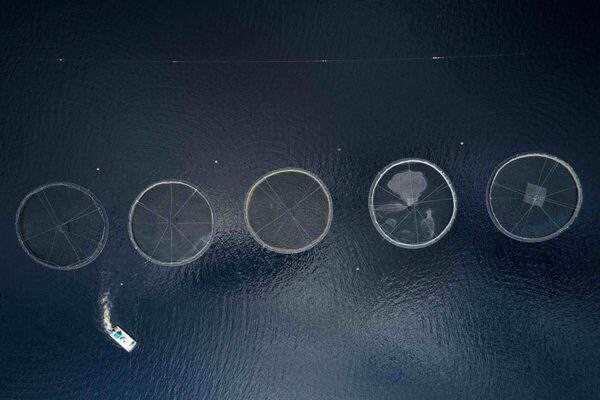Hatcheries: From production to conservation
A vigorous debate is now underway about the next steps for British Columbia’s hatcheries. Extreme drought conditions have impacted watersheds in Canada’s western province for several years, and 2025 has been no exception.

The federal Department of Fisheries and Oceans (DFO) is considering using hatcheries for conservation to help wild salmon populations recover and stabilise, with investments in hatchery capacity and enhancement science.
Can the coming transition away from open net-pen salmon farming be a good thing? The British Columbia (BC) approach to fish hatcheries in 2025 is primarily shaped by the federal policy statement of June 2024, which commits to banning open net-pen salmon aquaculture in BC coastal waters by June 30, 2029.
The federal government’s draft “Salmon Aquaculture Transition Plan for BC” was released in September 2024, outlining steps to transform the marine salmon aquaculture sector. Diane Lebouthillier, Federal Fisheries Minister at the time, said that she was consulting with indigenous leaders, industry stakeholders, and coastal communities about the government’s transition plan. A final version is expected from the federal DFO this year.
The history here gets a bit complicated. It was back in 2018 that the Canadian Council of Fisheries and Aquaculture Ministers committed to developing a federal Aquaculture Act. In 2019, the Standing Senate Committee on Fisheries and Oceans released a report titled “Ocean of Opportunities”. Among other things, it put a spotlight on the need for legislative reform in the aquaculture sector.
In October 2024, the House of Commons Standing Committee on Fisheries and Oceans Canada conducted a statutory review of the Fisheries Act, which included discussions on how aquaculture is regulated. The national trade association, Canadian Aquaculture Industry Alliance (CAIA), submitted recommendations about language that would define aquaculture “more holistically” - and to bring clarity to regulations. On November 20, 2024, CAIA representatives appeared before the House Standing Committee to present legislative recommendations for updating the Fisheries Act.


The bigger picture
Hatcheries are part of this broader discussion about the future of salmon conservation and the aquaculture industry.
The shift away from open net-pen farms could lead to hatcheries focusing more on conservation rather than supplying fish for open net-pen operations. DFO is keen to use hatcheries for conservation to help wild salmon populations recover and stabilise, involving investments in hatchery capacity and enhancement science. A modernised policy for hatcheries is being developed with input from indigenous partners and stakeholders. Hatcheries are also involved in conservation partnerships, such as efforts to rebuild chinook salmon populations.
Land-based hatchery licences are being renewed for longer periods, suggesting a move towards land-based operations.
The closure of open net-pen farms is not going down well with salmon farming companies, and several have filed lawsuits against the federal government. The transition plan has also faced criticism from some First Nations, who have raised concerns about its feasibility and economic impacts, although some others support the proposals.
BC is undergoing something which has not really been tried before: a complex transition in its aquaculture and hatchery practices with the aim of protecting wild salmon – while also considering economic and community concerns.
For nearly 50 years, DFO has used hatcheries and human-made spawning channels to support and rebuild vulnerable salmon stocks; this is also called salmon enhancement.
Michelle Rainer of DFO’s Pacific Region says: “Some salmon populations could be at risk of disappearing without enhancement support.”
Under the Pacific Salmon Strategy Initiative (PSSI), DFO has embarked on a multi-year initiative to modernise its hatcheries. This includes activities such as: building new and upgrading existing hatcheries and infrastructure; investing in science; and improving the ways we plan, oversee, and assess our hatcheries. Rainer says that “modernisation also involves ensuring our programme is responsive to climate resiliency, with a particular focus on improvements to security of water supplies”.
Hatcheries are overseen by DFO’s Salmonid Enhancement Program (SEP), which produces over 300 million juvenile salmon annually for conservation, stock assessment, and harvest purposes, as well as restoring habitat in rivers, streams and wetlands. Rainer points out that, through community involvement, the programme annually engages with more than 10,000 volunteers, supports 17 medium-sized community and First Nations hatcheries and 77 smaller-scale volunteer-operated community enhancement facilities, and supplies school education and awareness programmes. SEP also supports citizen and First Nation involvement in salmon enhancement and watershed stewardship, a role which has been bolstered by PSSI investments over the last four years.
For a different perspective, we consulted with Stu Barnes, Executive Director of First Nations Fisheries Council of British Columbia (FNFC), who notes: “Hatcheries can be both a tool and a contributing risk in the recovery of wild Pacific salmon, and strategic enhancement has been a necessary tool in certain cases.”
He offers up an example: the Okanagan Nation Alliance-led programme is working to re-establish Okanagan sockeye and chinook after salmon were near the brink of extirpation. Thanks to the Okanagan Dam Fish Passage, a new passageway built by the Syilx Nation in partnership with the City of Penticton, the province and DFO, sockeye salmon have been able to return to their historic spawning grounds in the region for the first time in more than a century.
Another example provided by Barnes is the recovery efforts of the Tŝilhqot’in National Government (TNG) related to the Big Bar Landslide, a rockslide in 2018 in the Fraser River in British Columbia that created a seven-metre high barrier. Barnes points to “emergency enhancement as a tool when returning Tŝilhqot’in salmon were unable to reach their spawning grounds”.
The TNG built and operated a permanent salmon conservation hatchery, in partnership with the DFO. In recent years, other First Nations have also begun pursuing strategic hatchery enhancements to support recovery efforts.
Barnes points to concerns about hatchery programmes, “particularly regarding the management of genetic diversity and ecological interactions between wild and hatchery fish”.
For example, West Coast Vancouver Island First Nations have been concerned about the impacts of genetic straying. Barnes highlights the fact that “…these occur when hatchery fish migrate into non-natal streams in the surrounding areas, and potentially mix with wild stocks and reduce overall genetic diversity”. Efforts are underway to better understand these impacts on wild stocks – and to mitigate them as part of broader recovery plans.
With over 70% of Pacific salmon stocks in decline, many First Nations are interested in what Barnes calls “strategic enhancement to help recover local stocks”. But the goal is to “proceed cautiously, guided by both indigenous knowledge and western science. Hatcheries should not be seen as a silver bullet, but rather as one of several tools within a broader recovery approach. Many First Nations in BC also share long-term aspirations for wild Pacific salmon stocks to be sustainable and thriving, and for a future when hatcheries will no longer be necessary”.
In the meantime, First Nations in BC have conveyed long-standing concerns to DFO about how hatcheries are managed in the province, calling for better transparency for DFO’s Salmon Enhancement Programme, and the policies that guide management and decision-making processes.
Barnes says: “This is particularly important, recognising that hatcheries are often in First Nations’ territories and activities directly impact the local First Nations communities. First Nations are interested in working with DFO to develop a modernised policy framework to guide hatchery operations in BC, including setting shared objectives and production plans that align with First Nations’ interests and respect their roles in shared decision-making and resource management within their territories.”

Assessing hatcheries’ effectiveness
According to Sam James, Pacific Salmon Foundation (PSF) Project Manager, who helps lead its Hatchery Effectiveness Review, PSF completed a comprehensive review of hatchery effectiveness in BC in 2022. It examined hatchery-wild interactions, long-term trends in biological traits, the needs of smaller community hatcheries, and how well rebuilding and harvest objectives were being defined and measured.
James says that the review “identified a number of challenges with the current system: limited integration of hatchery and wild salmon monitoring; lack of transparency in hatchery data; unclear metrics for evaluating success; insufficient use of robust scientific studies and genetic tools to guide reform”.
Furthermore, he notes that BC hatcheries were initially intended to double salmon production, but the objectives have evolved over time and now encompass stewardship, education, assessment, rebuilding and enhanced fishing.
James said PSF is “encouraged to see DFO’s Hatchery Science team and their new Pacific Hatchery Adaptation Strategy tackling these issues head-on to better address modern challenges and reflect the state of salmon today”. PSF is especially interested in DFO’s plans for stronger genetic management, more research and experimentation, clearer links between hatchery production and conservation goals, and more transparent planning processes. (PSF co-chairs an external expert guidance committee advising on the development and implementation of these changes).
James and PSF are convinced that hatcheries will remain part of salmon management in BC, “but the shift toward more science-based, transparent, and adaptive practices will be key to ensuring they support salmon recovery and long-term sustainability through a more holistic lens.”

Case study: Okanagan Chinook Restoration Program
The Okanagan Chinook Restoration Program is a long-term effort to restore Okanagan chinook salmon, which include sk’lwist (summer-run salmon) spawning in the mainstem Okanagan River and ntitiyx (spring-run salmon) spawning in its tributaries.
Sk’lwist primarily have a four-to-five-year life cycle. They return to the Okanagan River as adults in July/August and spawn in October in the mainstem of the river. These fry emerge in the following spring and usually leave the basin within 3-6 months, though some remain up to a year. They then migrate to the ocean for 1-3 years and return to spawn again.
Spring chinook also primarily have a four-year life cycle. They return to the Okanagan River as adults in May/June, and spawn in early September in the tributaries of the basin. These fry emerge in the following spring and typically spend one year in the tributary or mainstem river or lake of the basin. They then migrate to the ocean for 1-2 years and then return.
The Okanagan Nation Alliance (ONA) has been monitoring live adult chinook and carcasses for over 15 years to gather information on abundance, distribution and biological population characteristics. Conservation status assessments for Okanagan sk’lwist were completed in 2006 and 2016 in collaboration with our communities and the En’owkin Centre. Sk’lwist were designated as threatened in 2006 and re-assessed as endangered in 2016. ONA’s Okanagan Chinook Recovery Action Plan (2016) outlines recovery goals and proposes specific actions to achieve those goals.
Beginning in June 2017, juvenile hatchery-reared sk’lwist have been released into the Okanagan River annually to rebuild the population. Releases have ranged from 3,400 to 22,000 chinook. The eggs were provided by Chief Joseph hatchery and reared at ONA’s kł cp̓əlk̓ stim̓ hatchery in Penticton. In 2020, they were able to collect eggs from chinook spawning in the Okanagan River for the first time. Juvenile chinook may spend several months to up to two years in the Okanagan River and lakes before migrating out through the Columbia River to the ocean. A portion of the hatchery-reared chinook receive Passive Integrated Transponder (PIT) tags that enable biologists to track their movement and survival from release to return as spawners. In addition, ONA is undertaking a juvenile chinook survival study to identify possible areas and causes of low survival, as well as extensive habitat inventories aimed at protecting existing and restoring additional nursery habitats for juvenile chinook.
As returns in the US Okanagan River increase, the ONA anticipates that spring chinook will move upstream into the Canadian tributaries to slowly repopulate their former range. There are about 3-5 suitable tributaries in the US Okanagan and 20-25 suitable tributaries in the Canadian Okanagan. Ntitiyx observations have increased in recent years and ONA and its communities have seen ntitiyx in tributaries as far north as Whiteman Creek at the north end of Okanagan Lake. The ONA is collaborating with Colville Confederated Tribes and the US Geological Survey to monitor Okanagan tributaries for ntitiyx presence using Environmental DNA (eDNA) methods. It is hoped in time ONA will be able to collect broodstock from those tributaries to begin local recovery.
GO DEEPER - further reading
• marinescience.psf.ca/hatchery-effectiveness/
• www.dfo-mpo.gc.ca/campaign-campagne/pss-ssp/ enhancement-mise-en-valeur-eng.html
• www.dfo-mpo.gc.ca/transparency-transparence/mtb-ctm/2025/2-b8-aquaculture-eng.html
• psf.ca/blog/whats-next-for-hatcheries/
• www.fishfarmermagazine.com/news/report-highlights-hope-behind-bc-closures
Why not try these links to see what our Fish Farmer AI can tell you.
(Please note this is an experimental service)




